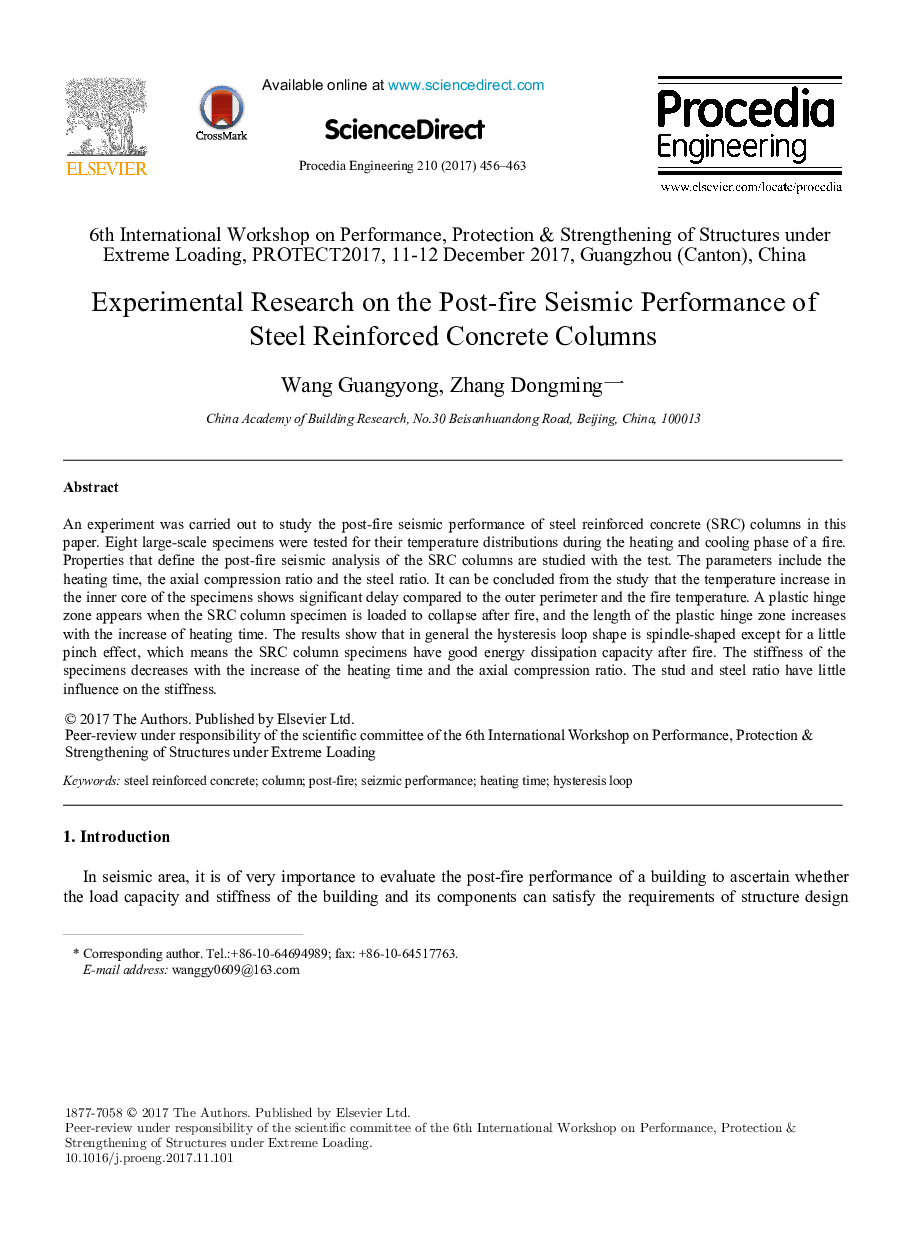| Article ID | Journal | Published Year | Pages | File Type |
|---|---|---|---|---|
| 7226844 | Procedia Engineering | 2017 | 8 Pages |
Abstract
An experiment was carried out to study the post-fire seismic performance of steel reinforced concrete (SRC) columns in this paper. Eight large-scale specimens were tested for their temperature distributions during the heating and cooling phase of a fire. Properties that define the post-fire seismic analysis of the SRC columns are studied with the test. The parameters include the heating time, the axial compression ratio and the steel ratio. It can be concluded from the study that the temperature increase in the inner core of the specimens shows significant delay compared to the outer perimeter and the fire temperature. A plastic hinge zone appears when the SRC column specimen is loaded to collapse after fire, and the length of the plastic hinge zone increases with the increase of heating time. The results show that in general the hysteresis loop shape is spindle-shaped except for a little pinch effect, which means the SRC column specimens have good energy dissipation capacity after fire. The stiffness of the specimens decreases with the increase of the heating time and the axial compression ratio. The stud and steel ratio have little influence on the stiffness.
Related Topics
Physical Sciences and Engineering
Engineering
Engineering (General)
Authors
Wang Guangyong, Zhang Dongming,
